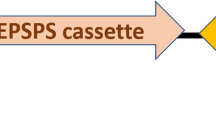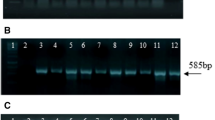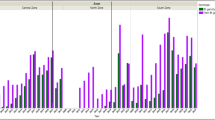Abstract
It is possible to infer the genetically modified species by using remotely sensed data. Using ERDAS software the algorithm of BT (Bacillus thuringiensis) Cotton in Punjab, India was developed successfully. GPS enabled space technology has the potential to identify the exact location of Bt Cotton by generating Normalized Difference Vegetation Index (NDVI) for the calculation of total area covered by this species. It was possible to develop a correlation in between genetically modified Cotton crop and NDVI value. In parts of Bhatinda district of Punjab the yield of Bt Cotton and NDVI showing R2 value of more than 4.5 in regression analysis. A correlation matrix was also generated which shows that NDVI values of BT cotton has reasonably acceptable correlation with Total Dissolved Solids (TDS) of soil and water also.
Similar content being viewed by others
Article PDF
Author information
Authors and Affiliations
Corresponding author
Rights and permissions
About this article
Cite this article
Mukherjee, S., Shashtri, S., Kumar Singh, C. et al. Genetically modified Cotton species detection by LISS-III satellite data. Nat Prec (2008). https://doi.org/10.1038/npre.2008.2659.1
Received:
Accepted:
Published:
DOI: https://doi.org/10.1038/npre.2008.2659.1



